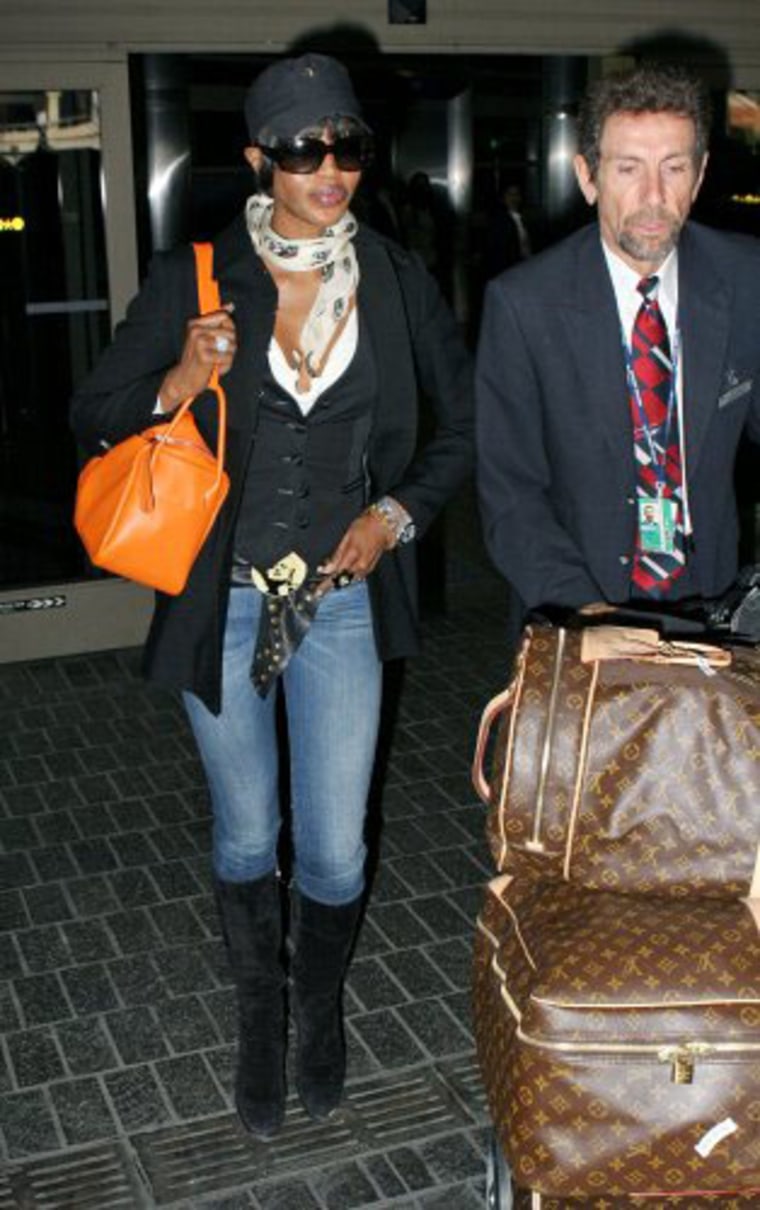Celebrities are just like the rest of us, even when they travel, right?
After all, nobody likes the hassles of the airport: taking off your shoes, figuring out the latest baggage rules, or shooing away the paparazzi when you’re just trying to buy a magazine or some M&Ms before your flight.
Okay, so perhaps celebrities have it worse—in some ways—when negotiating their way through air travel. On the other hand, famous folks also have a colorful track record of freaking out both in airports and while cruising at 30,000 feet.
Countless news reports detail some celebrity air rage incidents that many of us can relate to: Naomi Campbell went ballistic when her luggage got lost. And Clay Aiken got into a “dispute” with a fellow traveler when his in-flight nap invaded her personal space.
Other incidents get a little more extreme. Icelandic singer Björk lashed out at a reporter in a Thai airport just for welcoming her to the country. And a near riot took place at London’s Heathrow in 2006 after Snoop Dogg and some of his entourage were asked to leave a business-class lounge—and almost took down a duty-free shop with them.
The term “air rage” can be applied to anything from smoking onboard a plane to assaulting the flight crew. Andrew Thomas, a professor of international business at University of Akron, founder of AirRage.org, and author of the book Air Rage: Crisis in the Skies, says that famous people have a higher likelihood of air rage, in large part because they tend to sit closer to the cockpit.
“There is an entitlement factor that goes with folks in the front of the plane, and I would extend that to celebrities as well,” he says. “There is a disproportionate number of air rage incidents that take place in business class—people who are not always used to the answer ‘no.’ ”
The FAA and Department of Homeland Security both monitor air rage incidents on U.S. flights, but they don’t strictly track it on all levels. The FAA has reported only 55 “unruly passenger” incidents in 2009, as of September, with 121 incidents reported in 2008. (The highest number of reported incidents since 1995 was 304, in 2004.) Security breaches, meanwhile, are reported to the Department of Homeland Security. Technically, the FBI has jurisdiction over airspace, which is why anyone who breaks the rules by “interfering with the flight crew” will often be met by an FBI agent, rather than airport or local police, for questioning upon landing.
An Air Transport Association spokesman says that the airline industry group doesn’t track air rage at all, but that, “anecdotally, the number of unruly incidents, relative to the total number of travelers, is minuscule. Flight attendants do an excellent and commendable job at diffusing the potential for rage onboard.”
Across the pond, however, one finds starkly different information. According to Britain’s Department of Transport, air rage incidents on U.K. planes has gone up 30 percent in the past year, to nearly 3,500 cases.
Interestingly enough, a striking number of celebrity air rage incidents involve London’s Heathrow Airport. Is it just because the rich and famous pass through Heathrow so often, or is there something about the prospect of warm beer and driving on the left that gets people agitated?
Thomas speculates that the Heathrow problem stems from the fact that it’s the most-traveled international hub—and, perhaps, because of its easy access to the main trigger of in-flight rage: booze. “They really push the duty-free stuff at Heathrow,” he says, “so a lot of people buy their own stuff and carry it on the plane.”
Even so, given how much bigger the U.S. is than the U.K., Thomas estimates that the real number of U.S. air rage incidents likely totals more than 10,000 per year. But, for PR reasons, airlines don’t report the vast majority of incidents, unless there’s an extreme case requiring legal action. “The airlines’ unstated policy,” Thomas says, “is to get this passenger the hell out of here—and then let it go.”
